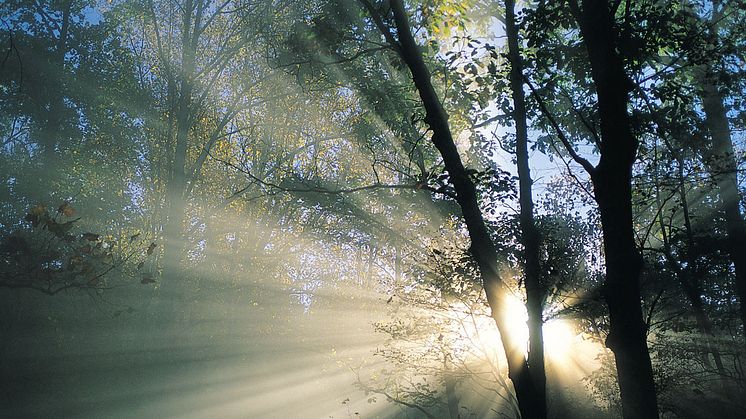
Press release -
The spring equinox – The return of the sun is the year’s greatest celebration
(Swedish, Danish and Norwegian versions of this article are available in pdf-format)
When you get up on Thursday, the world will have changed. In the northern hemisphere, light will vanquish darkness and the days will be longer than the nights. It is the spring equinox and the light means that we feel both healthier and happier. Latest research shows that even your artificial lighting can have the same positive impact as daylight.
It is no coincidence that cultures all around the globe enjoy celebrations in connection with the spring equinox, which falls this year on Thursday 20 March. The rays of the sun reawaken nature and shoo away the darkness of night. But there are more reasons for celebrating. Recent research shows that people have a purely biological attraction to the heating rays of the sun.
Rods, cones and the third receptor
It was believed for a long time that the eye only had two receptors, rods and cones. In the early 2000s, however, a third receptor was found. A light-sensitive receptor - without connection to our vision - was found to affect the body’s hormone production. The light that reaches the eye’s retina affects our wakefulness and sleep. Since the discovery, researchers all across the world have attempted to find out which light affect hormone levels. How much light is required? Does the colour of the light make any difference? Does it make any difference where the light comes from?
The answer can be found in nature. If you look out of the window, you see the light from the skies, a light that has been seen throughout the development of human beings. Seen from an evolutionary perspective, our life indoors under electric light has only been for a short period. We are still created for a life in natural light.
Back to nature
For many years, researchers have been wondering about how spring fever is sent from nature into our brains. We now know that the messenger is light. Just imagine walking over an open field with the sky stretching like a great blue vault above you. The light has reached the retina, and is stimulating the third receptor. The receptor sends signals to your brain, telling it that days are now longer than nights, and we can celebrate and shout hurray in greetings to the sun, just as our ancestors have done for thousands of years.
It is common knowledge that light therapy has been used for many years to relieve fatigue during the winter. Based on this knowledge, researchers have asked whether artificial light can have the same effect. If that were the case, we would have a tool box that could help office workers, and teachers and students to perform better and feel better!
The latest research has given us several answers to the question of how we can use artificial light to recreate the effect of daylight.
Creating spring feelings with artificial light
A study that was performed at a high school in Helsingborg, Sweden, shows that the correct lighting in school buildings can affect people biologically in the same way as natural light. The results of the study show in which way we must move to apply Mother Nature’s lighting philosophy to improve the environment for anyone working indoors.
Other studies showed that anxiety levels can be reduced through natural lighting, and for the first time we can also explain how that takes place in the brain.
A study was conducted in which trial subjects looked at a picture game. At the same time, the researchers scanned the subjects’ brains and followed the impulses between the amygdala and the frontal lobes in order to measure the degree of anxiety triggered in each subject.
One of the test groups made no changes to their daily routines, while the other group spent 30 minutes every day under lighting with the correct intensity and direction for three weeks. The results, which have recently been published in the journal Biological Psychiatry, showed that the group who had received the light therapy experienced far lower levels of anxiety while the test was in progress. MR scans showed a direct correlation between the amount of light and the reduction in anxiety levels in the study subjects. This is the first time ever that it has been possible to track spring fever in the brain.
Celebrate the light!
So, we have great reasons to enjoy the light and the spring. You surely already think that you feel better, are happier and more optimistic. Also look forward to the fact that we can actually improve the lighting in our schools and offices, so that we don’t have to feel depressed about the winter darkness. The joy we feel about the return of the light is deeply rooted in us – so go out and experience the spring and enjoy the sun and the light!
Happy spring equinox!
Henrik Clausen
Lighting inspirer at Fagerhult
Topics
Categories
Fagerhult is one of Europe’s leading lighting groups with approximately 2,200 employees and operations in 20 countries. We create modern products and exciting, energy-efficient environmentally-adapted lighting installations, successfully integrated into their individual environments. The Group includes such strong brands as Fagerhult, Ateljé Lyktan, Whitecroft Lighting, Eagle Lighting, LTS Licht & Leuchten, I-Valo, DesignPlan and Arlight.

